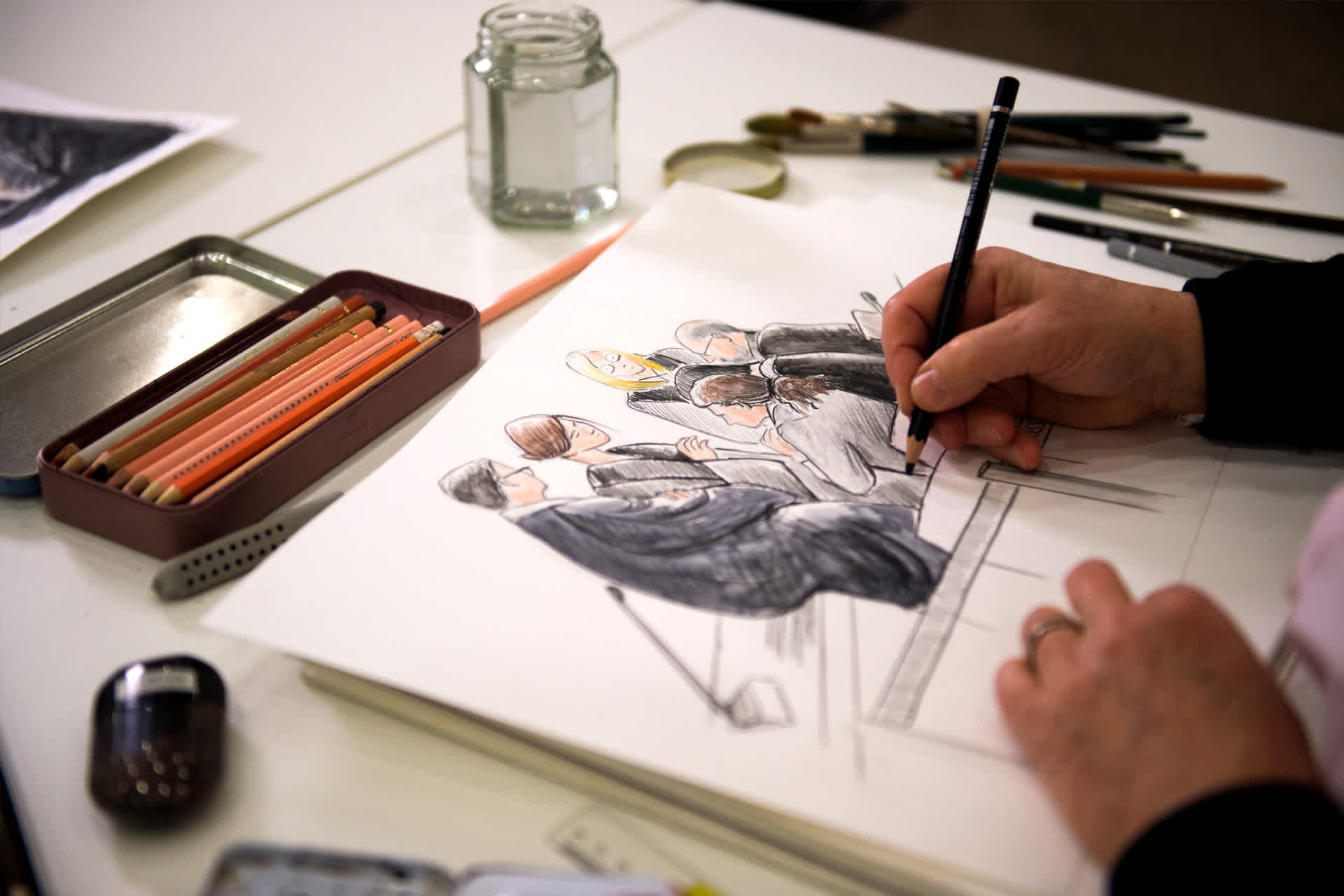Sketching in Court

With binoculars held up to her eyes, Christine Cornell cranes forward. She looks past the court marshals standing in front of her to catch a glimpse of her subject. Pastels and paper in hand, she began to sketch.
As a courtroom sketch artist, Cornell has drawn many important people during her career. Her list includes professional football player Tom Brady, rock star Mick Jagger, and former United States president Donald Trump. She sketches people who are appearing in court to give testimonies or answer to offenses.
Courtroom sketch artists combine talent, speed, and accuracy. They are often among the few people to witness the country’s most high-profile court cases.
Under Pressure
This job has become even more important in recent years. Rules dictating when cameras are allowed in the courtroom have changed, and the 24/7 news cycle creates tight deadlines. Sketch artists must meet those deadlines while being squeezed into a courtroom, sometimes with an obstructed view. “You couldn’t draw under worse circumstances,” Cornell says. “That’s the truth.”
Other courtroom sketch artists mention similar pressures. They must stay on their toes to create vivid, accurate images of key moments. “It’s instantaneous,” says Arthur Lien, a courtroom sketch artist based in Washington, D.C. He primarily covers the United States Supreme Court.
These artists witness historic moments and dramatic testimonials. Jane Rosenberg, a courtroom sketch artist who began her career in 1980, says some moments have moved her to tears. “It’s very hard to draw with tears in my eyes,” she says. “I try to stay neutral and keep working.”
Cornell says, “I just try to make the drawing feel like them and what we’re seeing and what we’re witnessing. That’s what we’re there for. To tell the story.”
This article is adapted from a story originally published in TIME on June 6, 2018.


